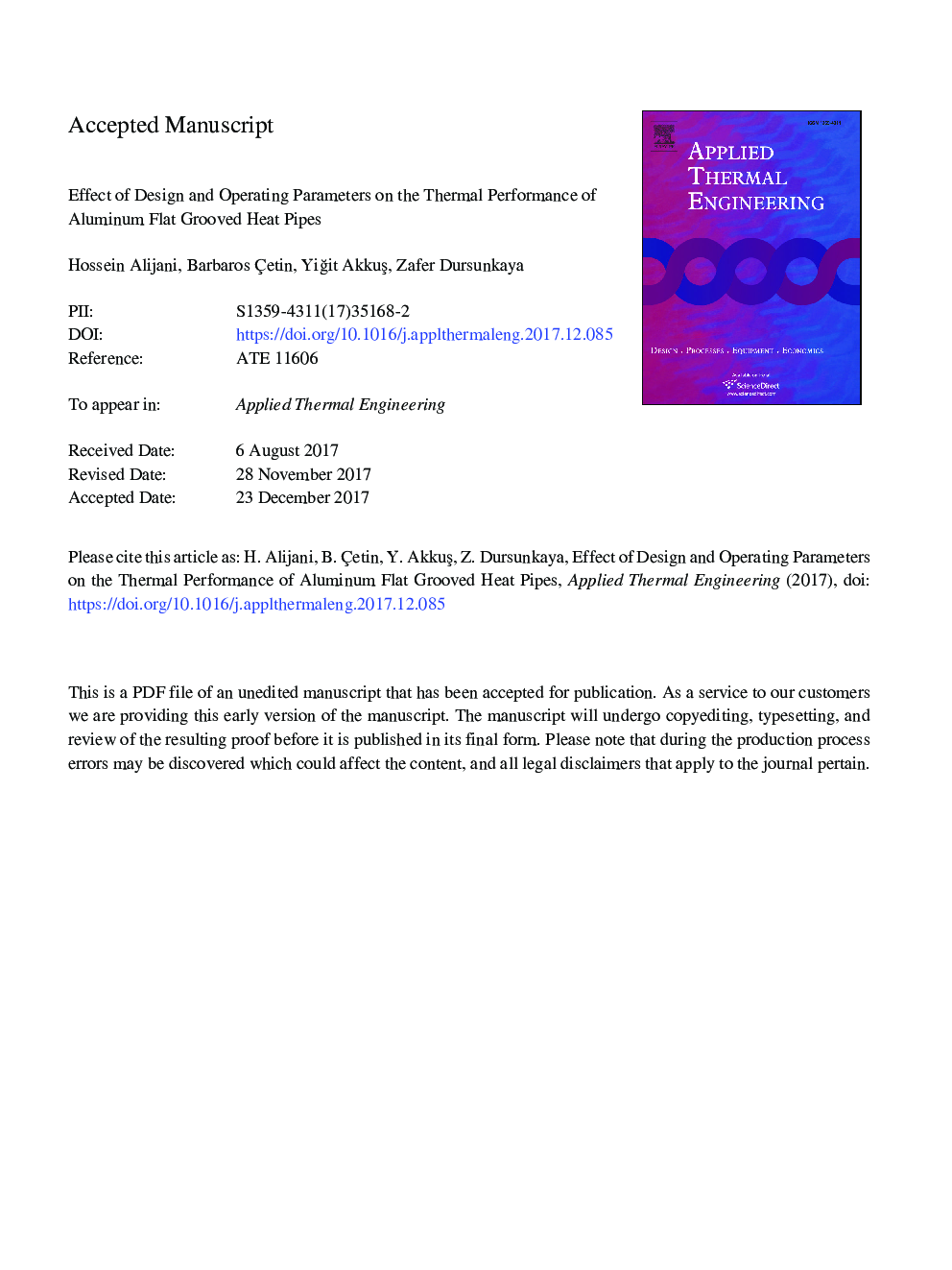| Article ID | Journal | Published Year | Pages | File Type |
|---|---|---|---|---|
| 7046021 | Applied Thermal Engineering | 2018 | 33 Pages |
Abstract
Four aluminum flat grooved heat pipes with groove widths of 0.2, 0.4, 0.8 and 1.6mm are fabricated and the effect of filling ratio on the thermal performance is experimentally studied for four different heat flux values of 2.1, 3.2, 4.2 and 5.3W/cm2. An optimum filling ratio corresponding to each heat flux is determined where the heat pipe has the best thermal performance. Thermal performance of the heat pipes are evaluated using three indicators; (i) the temperature difference between the heat source and heat sink surfaces, (ii) the temperature difference between the peak system temperature and the temperature of the cooling ambient and (iii) heat pipe effectiveness defined as a temperature difference ratio under dry and operating conditions. A flow and evaporative mass scaling model is developed to interpret the experimental findings. Experimental results reveal that at the optimum point the heat pipe with the 0.4mm groove width has the best thermal performance, and the heat pipe with the smallest 0.2mm groove operates under dryout conditions even for the lowest heat flux, the reason of which is discussed based on interpretation of underlying phase change physics. Experiments reveal the existence of two operating regimes; with and without dryout in the grooves. Although higher heat loads can be carried under dryout conditions, a limit exists for the maximum heat flux where the pipe operates without the onset of dryout for a specific groove density.
Related Topics
Physical Sciences and Engineering
Chemical Engineering
Fluid Flow and Transfer Processes
Authors
Hossein Alijani, Barbaros Ãetin, YiÄit AkkuÅ, Zafer Dursunkaya,
